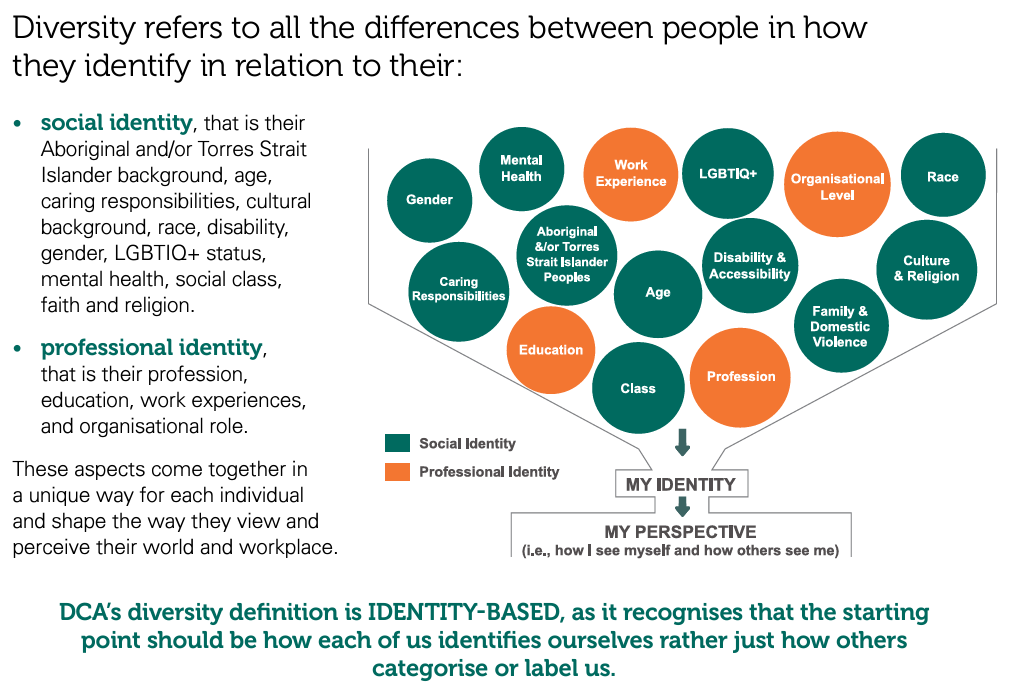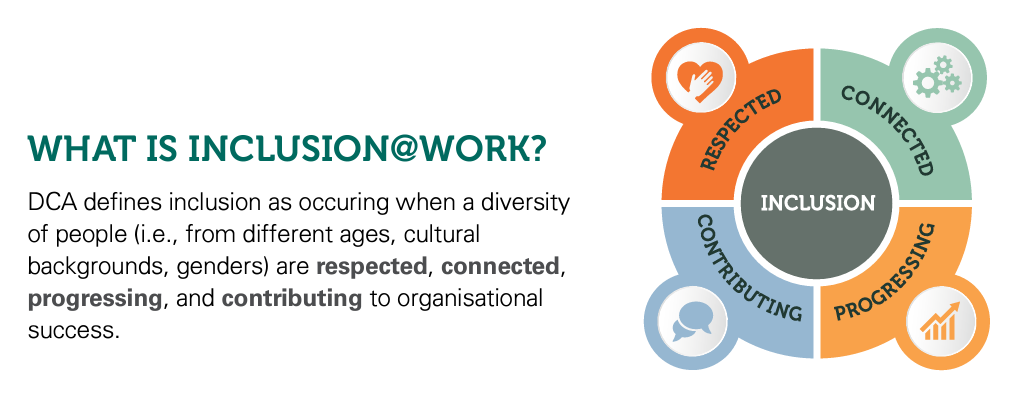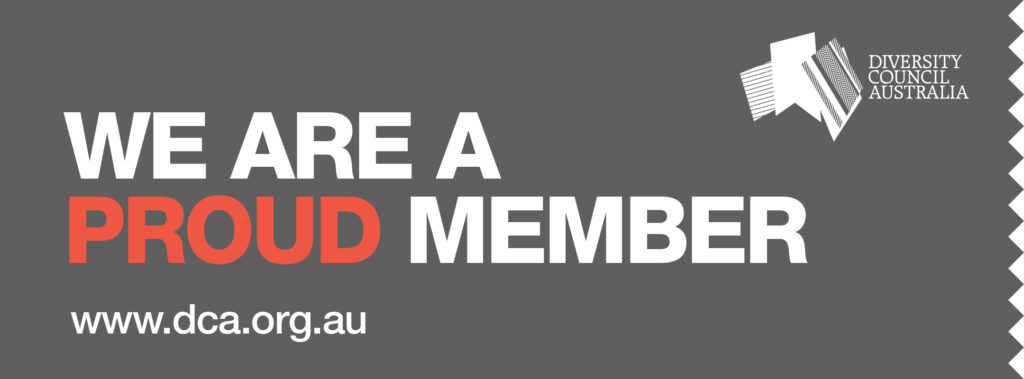Diversity and Inclusion are such popular terms in the Australian business landscape at the moment. We hear the acronym D&I used around a lot. The term was created to simplistically cover the vast array of essentially what makes us different in society. But if society itself is diverse, then why do we need D&I policies in the workplace? Great question.
Of course, the answer to this question isn’t exactly straight forward. It’s complex and involves psychological reasoning around unconscious bias, equity v equality, cultural belief and identity. Identity can further be broken down into two more labels; Social Identity (age, race, cultural background, religion etc) and Professional identity (education, profession, job titles etc).

Inclusion on the other hand, is a focus on taking all that diversity talked about above, and making is work in a positive way, where employees feel respected, heard, valued and understood. So when we feel inclusivity at work, we feel accepted for exactly who we are, that our differences are valued and we feel connected and respected.

The Diversity Council of Australia was created to be the trusted advisor to businesses on every aspect of D&I in the workplace. Every Australian deserves the right to be employed and to experience an equitable recruitment process.
EmployAbility, a division of Spinal Cord Injuries Australia, has been a proud member of the Diversity Council of Australia (DCA) for a number of years now. We jointly share in the belief that D&I is so much more than just “feel good” box ticking exercises. As an organisation that lives what it preaches, we see on a daily basis that D&I is good for everyone in the organisation from top to bottom; boosting employee wellbeing and innovating performance.

Research undertaken by the DCA indicates that there are roughly 3 million Australia’s looks for work. These people are capable, talented, and willing, but overlooked by employers. They are most likely to be from marginalised groups including:
- Aboriginal and/or Torres Strait Islander people
- Culturally and/or racially marginalised people
- Carers (of young children and sole parents)
- People from lower social class
- People with disability
- Transgender people
- Older people (aged over 55)
- Younger people (aged under 25)
Inclusive Recruitment is the solution and this is exactly where we can help guide you.
DCA offer the following guideline for inclusive recruitment.

How can we help?
Australian organisations need to diversify who and how they hire if they are to meet their workforce needs “ tapping into pools of talent typically left off their recruitment radars. EmployAbility was designed to help meet this need. We are an independent, not-for-profit, who offer a unique perspective on Diversity & Inclusion because we live it every day.
With 25% of our office employees, and over 50% of our board living with disability, we have more than 3,000 engaged members who either have disability or a loved one with disability. These advantages give us a unique perspective and understanding of the disability community.
Our team of professionals can help guide your organisation’s D&I needs through online workshops, in house training or via a Disability Inclusion Status Check (DISC) often referred to as a Disability Inclusion Action Plan.
Contact us today to make your first move towards Diversity & Inclusion.
Email: employability@scia.org.au or Phone 1800 819 775 or via our Building Employer Confidence Program

